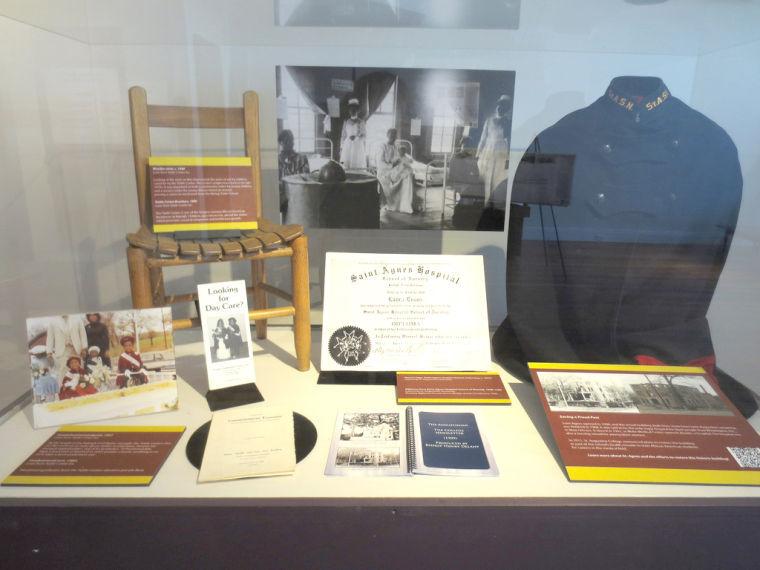When Raleigh celebrated its bicentennial in 1992, a plan was set in motion to establish a museum dedicated to the North Carolina State Capitol.
The City of Raleigh Museum became the pet-project of local historian Beth Crabtree and Mary Cates and opened its first exhibit in 1993. The museum was housed in the Borden Building, a former orphanage, until 1998 when it moved to its current location in the historic Briggs Building on Fayetteville Street.
The COR Museum operated as non-profit until July 2012, when, due to the effects of the economic downturn, the City of Raleigh assumed responsibility for the museum’s operations.
“It was then that we overhauled the entire museum,” said Ernest Dollar, director of the COR Museum. “There was a new name, a new staff and a new logo. We had nowhere to go but up.”
Dollar, who received his master’s in public history from N.C. State in 2009, said that while the museum is tasked with uncovering and presenting Raleigh’s past, there is another side of museum work that is often ignored.
“Raleigh is such an up-and-comer,” Dollar said. “You can’t really miss the fact that this is a city of innovation. This city constantly looks ahead, we need to be a place where our current and future innovations can be showcased.”
According to its website, COR Museum seeks to “preserve Raleigh’s past for the future.” COR also collects and cares for artifacts, curates exhibits and puts on programs to educate others about Raleigh’s history.
Dollar said the last year has been a year of rebranding and reconfiguration and hopes the museum will find its place among the other museums in the area.
In the last year, Dollar and his team have uncovered a collection of 300,000 to 500,000 locally created photographs, which include everything from prom pictures to political candidates giving speeches. The museum wants to digitize the collection to maximize distribution of these stories, according to Dollar.
“Our job right now is to show the public that history is still with us,” Dollar said. “Once that happens, they’ll see the role history plays in our daily lives and will get them asking ‘what role does the past play in the future?’ It’s our job to make people see our relevance through these programs and projects.”
One such project is what Dollar calls an “augmented reality” phone application that allows users to use a smartphone to uncover the past. The application would allow visitors to see the history that surrounds them at points around the city by overlapping historic images over modern street scenes to reveal what Raleigh once looked like.
The COR Museum is not the first to bring this technology to the museum-front. According to the COR Museum’s blog, the Museum of London began using the technology several years ago and has seen a significant increase in visitation.
“Everyone has a smartphone in their back pocket,” Dollar said. “This tech-savvy culture is allowing museums to do newer, more exciting things than ever before. The potential for this app grows every day. It will be so easy and fun to use.”
Dollar said it was the City of Raleigh’s decision to “take a chance” on the museum that has given way to the increase in productivity and enthusiasm.
“When I was working as the director of Preservation Society of Chapel Hill, we went through same process of hemorrhaging money and when we asked the city for help, we were denied,” Dollar said. “Unfortunately, that museum closed. Here, we’ve been really fortunate. Raleigh has invested and has allowed us freedom to put more into our public programs.”
Last summer’s turnaround and restructuring provided the basis for the museum’s main project, an exhibit set to open on Sept. 28 titled “Raleigh Then, Raleigh Now, Raleigh Next.” The permanent exhibit will feature images from local photographers and artists.
“‘Raleigh Then, Raleigh Now, Raleigh Next,’ will use touchscreen technology to take visitors on a photographic ride through Raleigh’s history,” Dollar said.
Another exhibit opening in the next few weeks observes the International Bluegrass Music Association’s World of Bluegrass event to be held downtown from Sept. 24-28.
“It’s a really little-known fact, and a real stroke of dumb luck, that Raleigh radio played a pretty big role in formation of bluegrass music as a flourishing genre,” Dollar said.
According to Dollar, WPTF radio station broadcast a new sound to audiences in 1924 and the banjo-filled airwaves were a huge success.
“Musicians like Earl Scruggs and Bill Monroe made circuits to different towns and we were one of them,” Dollar said. “Raleigh helped broadcast the new sound and played a critical but tragically little known role in the creation of bluegrass.”
This new exhibit, Dollar said, will pay homage to those radio shows and will feature a rare collection of songbooks and sound bytes from the performances.
“By tapping into some really obvious interests that the residents of Raleigh and of North Carolina have and showing them their foundations in the past, we’re able to give them a great museum experience,” Dollar said. “It can be hard to get crowds to come into the same old place, so we want to be different. It’s much easier to get out of this building and show the people history in our everyday lives than it is trying to bring public in.”








